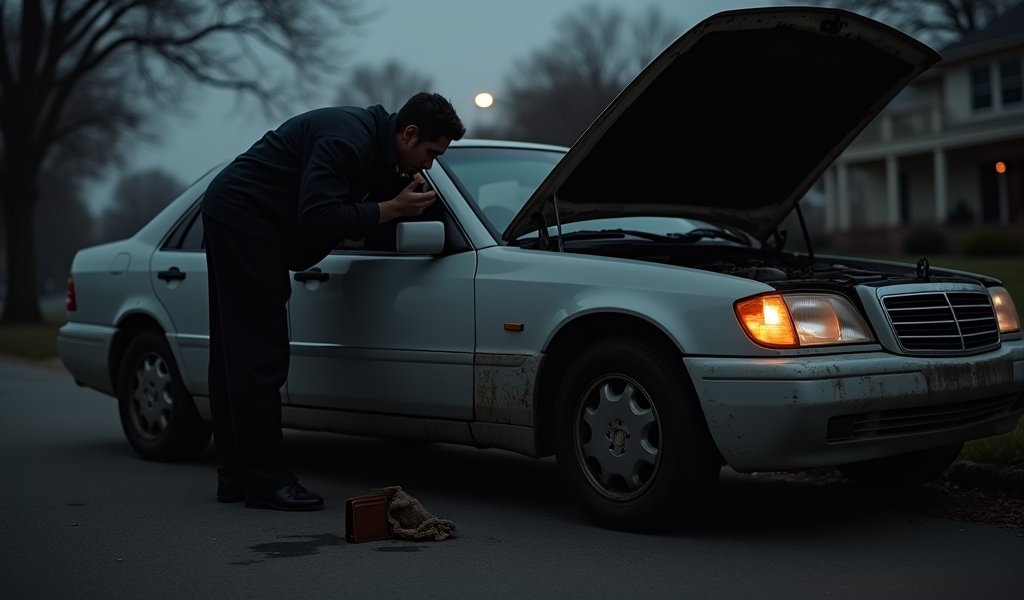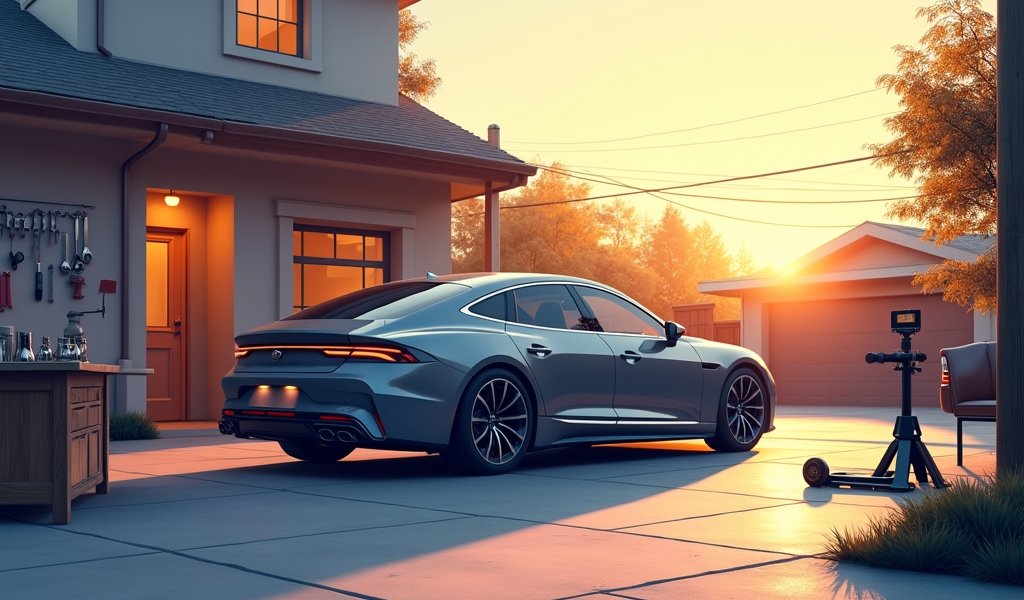Overview
This article provides five strategic tips for obtaining car loans with bad credit: prepare finances before applying, research specialized lenders, get pre-approved before shopping, save for a substantial down payment, and consider using a cosigner. It emphasizes that bad credit doesn’t prevent car ownership but requires careful planning, with post-approval steps focusing on making timely payments and refinancing after 12-18 months to rebuild credit and secure better terms.
Table of Contents
- Understanding Bad Credit and Car Loans
- Tip 1: Prepare Your Finances Before Applying
- Tip 2: Research Specialized Lenders
- Tip 3: Get Pre-approved Before Shopping
- Tip 4: Save for a Substantial Down Payment
- Tip 5: Consider a Cosigner
- What to Do After Getting Approved
- Conclusion
- Frequently Asked Questions
Understanding Bad Credit and Car Loans
Looking for bad credit car loans near me can feel like trying to fix a car with no tools and both hands tied behind your back. Trust me, as someone who’s spent decades helping folks navigate the financial roadblocks of vehicle ownership, I understand the frustration. Bad credit doesn’t mean you can’t get behind the wheel of a reliable car – it just means we need to be a bit more strategic about how we approach the dealership lot.
Bad credit typically refers to FICO scores below 600, which can result from late payments, high credit utilization, or previous bankruptcies. When lenders see these lower scores, they perceive higher risk, which translates to higher interest rates – sometimes painfully higher. According to Experian’s State of the Automotive Finance Market, borrowers with deep subprime credit scores (below 500) paid an average interest rate of 14.39% on new cars compared to 3.65% for those with excellent credit.
But don’t worry – just like diagnosing a mysterious engine knock, there’s a systematic approach to solving this problem. In this comprehensive guide, I’ll share five DIY tips that have helped countless clients with credit challenges drive home in cars they can actually afford. And unlike that “check engine” light that’s been mysteriously blinking for months, we’re not going to ignore these financial warning signs.
Tip 1: Prepare Your Finances Before Applying
Before walking into a dealership or submitting online applications, let’s pop open the hood on your finances and do some preventative maintenance. Just like you wouldn’t take a cross-country road trip without checking your oil and tire pressure, you shouldn’t apply for financing without knowing exactly where you stand.
First, request your credit reports from all three major bureaus (Experian, Equifax, and TransUnion). You’re entitled to one free report annually from each through AnnualCreditReport.com. Review these reports carefully for errors – you’d be surprised how common they are. A client of mine discovered a $7,000 loan on his credit report that wasn’t his, and removing it boosted his score by 45 points!
Next, calculate your debt-to-income (DTI) ratio by dividing your monthly debt payments by your gross monthly income. Lenders typically prefer a DTI under 40%. If yours is higher, consider paying down some existing debt before applying for a car loan. It’s like lightening the load before climbing a steep hill – your financial engine will thank you.
Create a realistic budget that includes not just the car payment but also:
- Insurance (often higher with bad credit)
- Fuel costs
- Routine maintenance
- Registration fees
- Potential repair expenses
Knowing exactly what you can afford monthly is crucial. I’ve seen too many folks focus solely on the payment while ignoring these “hidden” costs, only to find themselves performing financial acrobatics each month that would impress a Cirque du Soleil performer.
Finally, gather essential documents including proof of income (pay stubs, tax returns), proof of residence, driver’s license, and personal references. Having these documents ready shows lenders you’re serious and organized, which can improve your chances of loan approval despite credit challenges.

Tip 2: Research Specialized Lenders
Not all lenders are created equal when it comes to bad credit situations – just like you wouldn’t take your high-performance sports car to the quick-lube place for complex engine work. Some lenders specialize in subprime loans and understand that your credit history doesn’t tell your complete financial story.
Start by investigating credit unions in your area. These member-owned financial institutions often have more flexible lending criteria and lower interest rates than traditional banks. I’ve seen credit unions approve loans that big banks wouldn’t touch with a ten-foot pole, and with interest rates that were 3-5% lower.
Online lenders specializing in subprime auto loans are another valuable resource. Companies like Auto Credit Express, Car.Loan.com, and MyAutoLoan connect borrowers with bad credit to dealer networks and lenders willing to work with challenging credit situations.
Buy-here-pay-here (BHPH) dealerships are a last-resort option. These dealerships function as both the car seller and the financing company. While they almost always approve applicants regardless of credit history, they typically charge much higher interest rates – sometimes approaching the legal maximum – and may require weekly payments. I’ve had clients pay 25% interest at BHPH lots when they could have qualified for 12-15% through subprime lenders with a bit more research.
When researching potential lenders, pay special attention to:
- Interest rate ranges for your credit bracket
- Loan term options (shorter is generally better)
- Down payment requirements
- Prepayment penalties
- Customer reviews focusing on their subprime borrower experiences
Remember that each formal loan application triggers a hard inquiry on your credit report, which can temporarily lower your score. To minimize this impact, try to complete all auto loan applications within a 14-day window, as credit scoring models will typically count these as a single inquiry when they’re for the same purpose.
Tip 3: Get Pre-approved Before Shopping
Walking into a dealership without pre-approval when you have credit challenges is like trying to diagnose an engine problem blindfolded – you’re at a serious disadvantage. Pre-approval puts you in the driver’s seat during negotiations and prevents the common “yo-yo financing” scam where dealers let you drive away before financing is finalized, only to call days later claiming the loan fell through and demanding a higher rate.
Start by applying with several of the specialized lenders you researched. When applying, be completely honest about your financial situation. Trying to hide past credit issues is like putting a piece of tape over that warning light on your dashboard – it doesn’t fix the problem, and eventually, it catches up with you.
Once you receive pre-approval offers, compare them carefully, focusing on:
- APR (Annual Percentage Rate)
- Loan term length
- Monthly payment amount
- Total interest paid over the life of the loan
- Any fees or conditions
Armed with your best pre-approval offer, you can now shop for vehicles within that budget. This approach transforms you from a “high-risk borrower” to a “cash buyer” in the eyes of the dealership, potentially giving you more negotiating leverage on the vehicle price.
One client of mine with a 540 credit score secured pre-approval for $15,000 at 11.5% before shopping. When the dealership tried offering in-house financing at 19%, she produced her pre-approval letter. Miraculously, they were suddenly able to beat her rate by a full percentage point! Just like having the right diagnostic tool makes car repair easier, having pre-approval makes car buying smoother.
Remember that pre-approvals typically last 30-60 days, giving you a reasonable shopping window. If you find yourself extending beyond that timeframe, you may need to reapply, which could mean another hard inquiry on your credit report.
Tip 4: Save for a Substantial Down Payment
A significant down payment can be your secret weapon when battling bad credit. It’s like adding a supercharger to your loan application – it boosts your chances of approval and can secure better terms. Lenders see your down payment as both reduced risk and evidence of your financial commitment.
For bad credit situations, aim for at least 20% down, though even 10-15% can make a substantial difference. This down payment serves several crucial purposes:
- Reduces the loan-to-value ratio, making the loan less risky for lenders
- Potentially lowers your interest rate
- Decreases your monthly payment
- Helps you avoid becoming “upside down” on your loan (owing more than the car is worth)
- May shorten the required loan term
I once worked with a couple with credit scores in the low 500s who saved aggressively for eight months to put $4,000 down on a $12,000 used SUV. That 33% down payment not only secured them approval but also brought their interest rate down from an offered 21% to 14.5% – saving them over $2,800 in interest over the life of the loan. That’s like getting a free major transmission service every year of ownership!
If saving feels impossible, consider these practical approaches:
Set up an automatic transfer to a separate savings account specifically for your car down payment. Even $50 per week accumulates to over $2,600 in a year. Sell unused items around your house – that exercise equipment doubling as a clothes hanger could be the start of your down payment fund. Consider a temporary side gig – delivering food, driving for rideshare companies, or freelancing in your area of expertise can accelerate your savings.
Delay gratification if possible. Driving your current vehicle for an additional 6-12 months while saving aggressively can dramatically improve your loan terms. Think of it as preventative maintenance for your financial future – a little patience now prevents major problems down the road.
If you’re currently making payments on a car you want to trade in, try to pay down the loan enough to eliminate negative equity. Carrying negative equity into a new bad credit loan is like pouring sugar in your gas tank – nothing good will come of it.

Tip 5: Consider a Cosigner
Adding a cosigner to your loan application can be like installing a turbocharger on an underpowered engine – it provides an immediate boost to your approval odds and loan terms. A cosigner with good credit essentially promises to make the payments if you cannot, substantially reducing the lender’s risk.
The ideal cosigner has:
- A credit score above 700
- Stable income with verification
- A low debt-to-income ratio
- A clean credit history without recent derogatory marks
- A close relationship with you (family member or long-term friend)
Having a qualified cosigner can reduce your interest rate dramatically – I’ve seen reductions of 5-10 percentage points, which can translate to thousands in savings. One memorable client saved over $4,500 in interest on a $18,000 loan when his father cosigned, bringing the rate down from 17.9% to 9.2%.
However, approaching someone to cosign requires tact and transparency. This isn’t just a signature – it’s a significant financial responsibility that will appear on their credit report and could affect their borrowing capacity. Be prepared to show them your detailed budget proving you can make the payments, and consider drafting a written agreement between you specifying what happens if you can’t pay.
Remember that any payment missteps will damage your cosigner’s credit along with yours, potentially straining your relationship. It’s like borrowing their pristine toolbox – you’d better return it in the same condition, or better!
If you do secure a cosigner, consider setting up automatic payments to ensure timeliness, and aim to refinance the loan in your name alone once your credit improves (typically after 12-18 months of perfect payment history). This strategy gives you the initial benefit of better terms while providing an exit strategy for your cosigner.
What to Do After Getting Approved
Congratulations! You’ve navigated the challenging terrain of bad credit financing and secured a loan. Now what? Just like proper maintenance after a major repair, your post-approval actions can determine whether this loan helps rebuild your credit or becomes another financial pothole.
First, set up automatic payments if possible. Late payments on an already challenged credit profile are like running on a spare tire too long – bound to create bigger problems. Many lenders offer a small interest rate reduction (0.25-0.5%) for enrolling in autopay, which can add up significantly over the loan term.
Next, create a plan to refinance. Most subprime auto loans can be refinanced after 12-18 months of on-time payments, potentially saving thousands in interest. I’ve helped clients cut their rates in half after 18 months of perfect payment history coupled with credit improvement in other areas.
Speaking of credit improvement, use this auto loan as a cornerstone of your credit rebuilding strategy. An installment loan with regular on-time payments can significantly boost your score over time. Combine this with responsible credit card usage (keeping utilization under 30%) and diligent payment of all other obligations to maximize the positive impact.
Consider making extra payments when possible. Unlike some loans, most auto loans don’t have prepayment penalties, so additional payments go directly to principal, reducing both your loan term and total interest paid. Even an extra $50 monthly can shorten a five-year loan by several months.
Finally, protect your investment with proper insurance and maintenance. Many subprime borrowers focus so intently on securing financing that they neglect these crucial aspects of vehicle ownership. Remember, a repossession due to an accident without proper insurance is just as damaging to your credit as one caused by missed payments.
Conclusion
Navigating bad credit car loans doesn’t have to be as mysterious as tracking down an intermittent electrical gremlin in your vehicle. With proper preparation, research, and strategy, you can secure financing that works for your situation while setting yourself up for future credit success.
By preparing your finances, researching specialized lenders, getting pre-approved, saving for a substantial down payment, and potentially leveraging a cosigner, you’ve got a comprehensive toolkit for addressing the bad credit car loan challenge. Remember that no down payment car loans might seem attractive, but they typically come with terms that can make your financial journey more difficult.
This isn’t just about getting a car – it’s about rebuilding your financial foundation. The strategies outlined here can help you secure transportation while simultaneously improving your credit position for future purchases.
Think of this process as a complete engine rebuild – it takes more time and effort than a quick fix, but the results are worth it and built to last. With patience, discipline, and the right approach, you’ll not only drive away in a reliable vehicle but also accelerate down the road to better credit and improved financial health.
Frequently Asked Questions
What minimum credit score do I need for a bad credit car loan?
There’s no universal minimum, but most subprime auto lenders work with scores as low as 500. Some buy-here-pay-here dealerships don’t use credit scores at all for approval decisions.
How much should I expect to pay in interest with bad credit?
Interest rates typically range from 10% to 25% for subprime auto loans, depending on your exact credit score and other factors. The national average for deep subprime borrowers is approximately 14-20%.
Can I get a car loan right after bankruptcy?
Yes, but expect higher interest rates and stricter terms. Some specialized lenders offer “fresh start” programs for post-bankruptcy borrowers, particularly if your bankruptcy has been discharged.
How long will a bad credit car loan affect my credit report?
The loan itself will remain on your credit report for up to 10 years. However, its impact on your score can become positive if you make consistent, on-time payments.
Is it better to finance through a dealership or get my own financing with bad credit?
Securing your own financing through pre-approval generally gives you more negotiating power and protection. Dealership financing might be convenient but often comes with higher rates for subprime borrowers unless they have special programs for credit-challenged customers.

